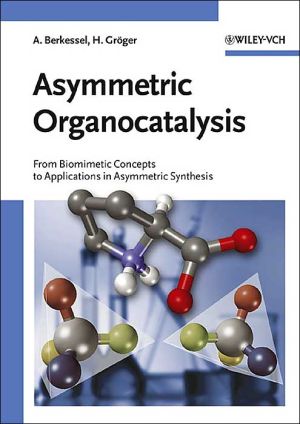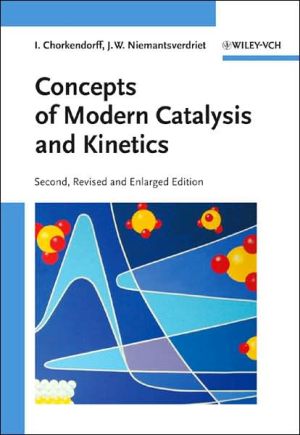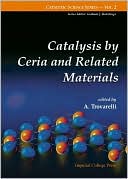Asymmetric Organocatalysis: From Biomimetic Concepts to Applications in Asymmetric Synthesis
Asymmetric catalysis represents still one of the major challenges in modern organic chemistry. Besides the well-established asymmetric metal-complex-catalysed syntheses and biocatalysis, the use of "pure" organic catalysts turned out to be an additional efficient tool for the synthesis of chiral building blocks. In this handbook, the experienced authors from academia and industry provide the first overview of the important use of such metal-free organic catalysts in organic chemistry. With...
Search in google:
Asymmetric catalysis is of ever-increasing importance in organic synthesis, both in the academic and the industrial environment. Between the extremes of metal-based and biocatalytic methods, the use of low-molecular weight and purely organic catalysts has become a third and highly efficient tool for enantioselective transformations. In this book, two experienced authors from academia and industry provide the first comprehensive overview of both the development and the current state of asymmetric organocatalysis. After a historical introduction, all synthetically relevant reaction types, such as nucleophilic substitution, addition to C=X bonds, cycloadditions and redox reactions are thoroughly discussed in a total of 11 chapters, followed by a consideration of large scale applications of organocatalysis. Additionally, the most frequently used organocatalysts and their properties are summarized in an appendix, aiding the research chemist in selecting an appropriate catalyst for a given transformation. Overall, this book targets organic chemists active both in industry and academia, and it deserves a place in every laboratory.From the Contents:Introduction: Organocatalysis - From Biomimetic Concepts to Powerful Methods for Asymmetric SynthesisNucleophilic Substitution at Aliphatic Carbon, e.g. Amino Acid Synthesis by AlkylationNucleophilic Addition to C=C, C=N, C=O, N=N and N=O Double BondsSynthesis of Epoxides and AziridinesCycloaddition ReactionsProtonation of EnolatesOxidation/ReductionKinetic Resolution of Racemic Alcohols and AminesDesymmetrization of meso- and prochiral CompoundsLarge-scale ApplicationsAppendix: Tabular Survey of Frequently used Organocatalysts
Preface. Foreword. 1 Introduction: Organocatalysis – From Biomimetic Concepts to Powerful Methods for Asymmetric Synthesis. 2 On the Structure of the Book, and a Few General Mechanistic Considerations. 2.1 The Structure of the Book. 2.2 General Mechanistic Considerations. 3 Nucleophilic Substitution at Aliphatic Carbon. 3.1 α-Alkylation of Cyclic Ketones and Related Compounds. 3.2 α-Alkylation of a-Amino Acid Derivatives. 3.3 α-Alkylation of Other Acyclic Substrates. 3.4 Fluorination, Chlorination, and Bromination Reactions. 4 Nucleophilic Addition to Electron-deficient C=C Double Bonds. 4.1 Intermolecular Michael Addition. 4.2 Intramolecular Michael Addition. 5 Nucleophilic Addition to C=N Double Bonds. 5.1 Hydrocyanation of Imines (Strecker Reaction). 5.2 The Mannich Reaction. 5.3 β-Lactam Synthesis. 5.4 Sulfur Ylide-based Aziridination of Imines. 5.5 Hydrophosphonylation of Imines. 6 Nucleophilic Addition to C=O Double Bonds. 6.1 Hydrocyanation. 6.2 Aldol Reactions. 6.3 β-Lactone Synthesis via Ketene Addition. 6.4 The Morita–Baylis–Hillman Reaction. 6.5 Allylation Reactions. 6.6 Alkylation of CbO Double Bonds. 6.7 The Darzens Reaction. 6.8 Sulfur Ylide-based Epoxidation of Aldehydes. 6.9 The Benzoin Condensation and the Stetter Reaction. 6.10 Hydrophosphonylation of C=O Double Bonds. 7 Nucleophilic Addition to Unsaturated Nitrogen. 7.1 Nucleophilic Addition to N=N Double Bonds. 7.2 Nucleophilic Addition to N=O Double Bonds. 8 Cycloaddition Reactions. 8.1 [4 + 2]-Cycloadditions – Diels–Alder Reactions. 8.2 [3 + 2]-Cycloadditions: Nitrone- and Electron-deficient Olefin-based Reactions. 9 Protonation of Enolates and Tautomerization of Enols. 9.1 Enantioselective Protonation of Enolates formed in situ from Enolate Precursors. 9.2 Enantioselective Tautomerization of Enols Generated in situ. 9.3 Enantioselective Protonation of Enolates Generated in situ from Conjugated Unsaturated Carboxylates. 10 Oxidation. 10.1 Epoxidation of Olefins. 10.2 Epoxidation of Enones and Enoates. 10.3 Sulfoxidation of Thioethers. 10.4 Oxidation of Alcohols. 11 Reduction of Carbonyl Compounds. 11.1 Borane Reduction Catalyzed by Oxazaborolidines and Phosphorus-based Catalysts. 11.2 Borohydride and Hydrosilane Reduction in the Presence of Phasetransfer Catalysts. 11.3 Reduction with Hydrosilanes in the Presence of Chiral Nucleophilic Activators. 12 Kinetic Resolution of Racemic Alcohols and Amines. 12.1 Acylation Reactions. 12.2 Redox Reactions. 13 Desymmetrization and Kinetic Resolution of Anhydrides; Desymmetrization of meso-Epoxides and other Prochiral Substrates. 13.1 Desymmetrization and Kinetic Resolution of Cyclic Anhydrides. 13.2 Additions to Prochiral Ketenes. 13.3 Desymmetrization of meso-Diols. 13.4 Desymmetrization of meso-Epoxides. 13.5 The Horner–Wadsworth–Emmons Reaction. 13.6 Rearrangement of O-Acyl Azlactones, O-Acyl Oxindoles, and O-Acyl Benzofuranones. 14 Large-scale Applications of Organocatalysis. 14.1 Introduction. 14.2 Organocatalysis for Large-scale Applications: Some General Aspects and Considerations. 14.3 Large-scale Organocatalytic Reaction Processes (Selected Case Studies). Appendix: Tabular Survey of Selected Organocatalysts: Reaction Scope and Availability. I. Primary and Secondary Amine Catalysts. II. Tertiary Amine and Pyridine Catalysts. III. Phosphanes. IV. Phosphoramidites, Phosphoramides and Formamides. V. Ureas, Thioureas, Guanidines, Amidines. VI. Ketones. VII. Imines, Iminium Cations and Oxazolines. VIII. Diols. IX. Sulfides. X. N-Oxides and Nitroxyl Radicals. XI. Heterocyclic Carbenes (Carbene Precursors). XII. Peptides. XIII. Phase Transfer Catalysts. Index.
\ From the Publisher"This fascinating monograph captures the diversity and power of an area of research whose roots extend deep within the organic chemistry literature, yet which has only recently achieved critical mass through the collective contributions of many present-day pioneers. ... is an essential addition to both academic and industrial research libraries, as well as to the personal collection of any scientist with an interest in catalysis or synthetic chemistry." Angewandte Chemie I.E.\ "... well-written with clear, focused schemes... of great value to those involved in synthetic methodology, catalysis, and total synthesis." Journal of the American Chemical Society\ "On the whole, the authors succeeded in covering a very broad range of reactions that are catalyzed by organic catalysts, and offer readers an excellent overview of the current situation in the field of asymmetric organocatalysis. This book can be recommended for all scientists working in the area of asymmetric catalysis, whether in industrial research and development or at the universities. Postgraduate students and postdoctoral researchers who have begun work on this rapidly growing field would derive considerable benefit from reading it."\ Synthesis\ "This monograph will be a valuable addition into personal collections of synthetic chemists and research libraries of academia and industry." E-STREAMS\ \ \








